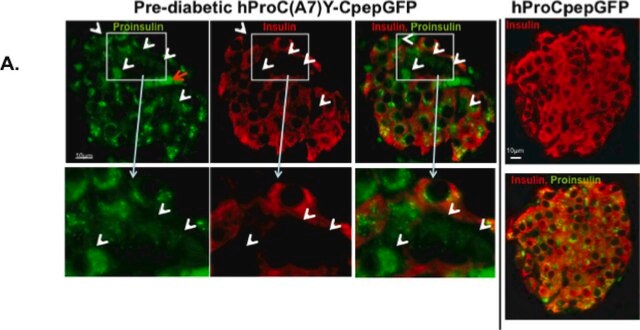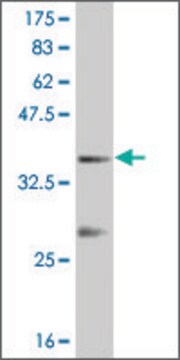05-1109
Przeciwciało przeciw peptydowi C-proinsuliny, klon C-PEP-01
clone C-PEP-01, from mouse
Synonim(y):
Antygen CD220, receptor insuliny
About This Item
Polecane produkty
pochodzenie biologiczne
mouse
Poziom jakości
forma przeciwciała
purified immunoglobulin
rodzaj przeciwciała
primary antibodies
klon
C-PEP-01, monoclonal
reaktywność gatunkowa
human
metody
immunohistochemistry: suitable (paraffin)
izotyp
IgG1
numer dostępu UniProt
Warunki transportu
wet ice
docelowa modyfikacja potranslacyjna
unmodified
informacje o genach
human ... INS(3630)
Opis ogólny
Specyficzność
Immunogen
Zastosowanie
Sygnalizacja
Sygnalizacja insuliny/energii
Jakość
Immunohistochemistry Analysis: A 1:100 dilution of this antibody detected insulin in human normal pancreas tissue.
Opis wartości docelowych
Powiązanie
Postać fizyczna
Przechowywanie i stabilność
Komentarz do analizy
Ludzka normalna tkanka trzustki
Inne uwagi
Oświadczenie o zrzeczeniu się odpowiedzialności
Nie możesz znaleźć właściwego produktu?
Wypróbuj nasz Narzędzie selektora produktów.
Kod klasy składowania
12 - Non Combustible Liquids
Klasa zagrożenia wodnego (WGK)
WGK 2
Temperatura zapłonu (°F)
Not applicable
Temperatura zapłonu (°C)
Not applicable
Certyfikaty analizy (CoA)
Poszukaj Certyfikaty analizy (CoA), wpisując numer partii/serii produktów. Numery serii i partii można znaleźć na etykiecie produktu po słowach „seria” lub „partia”.
Masz już ten produkt?
Dokumenty związane z niedawno zakupionymi produktami zostały zamieszczone w Bibliotece dokumentów.
Nasz zespół naukowców ma doświadczenie we wszystkich obszarach badań, w tym w naukach przyrodniczych, materiałoznawstwie, syntezie chemicznej, chromatografii, analityce i wielu innych dziedzinach.
Skontaktuj się z zespołem ds. pomocy technicznej






![Guanosine 5′-[β-thio]diphosphate trilithium salt ≥85% (HPLC), powder](/deepweb/assets/sigmaaldrich/product/structures/155/734/9bd8c8c5-4388-4f95-a924-4ff058fa4f41/640/9bd8c8c5-4388-4f95-a924-4ff058fa4f41.png)

